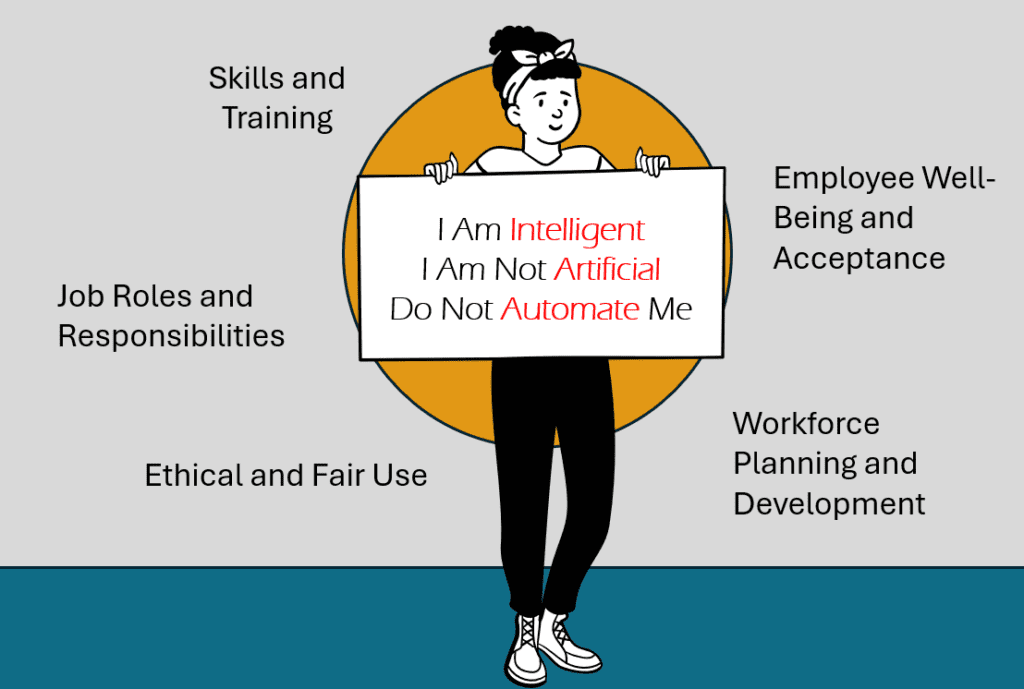Inspire, Don’t Eradicate Through Automation
Five key workforce considerations before opening the AI floodgates

Artificial Intelligence (the OG AI) is everywhere, and its influence on our daily lives is only going to become greater as our access becomes more abundant. Just this week Apple announced the new features of iOS 18 with ‘Apple Intelligence’ integration into iPhone 15 Pro and Pro Max devices bringing the convenience of an ‘intelligent’ assistant to another 50 million people overnight.
Whilst every industry frantically aims to tackle the automation-pandemic we are witnessing an unprecedented amount of investment being poured into change portfolios focused on shiny digital objects flashing short term cash savings opportunities. Unfortunately, as companies ‘digitise’ with the right intentions, they often fall short in appreciating the irreplaceable value realised through the non-artificially human workforce.
With recent studies suggesting upwards towards a 5x investment required in behavioural change to successfully land technology and digital transformation, why does workforce investment always seem to be a harder perpetual pill to swallow? In 2016, Klaus Schwab, the World Economic Forum founder and executive chairmen popularised the term 4IR, or Fourth Industrial Revolution, which many feel in recent years we are now living in moving on from the information age with the rapid rate and high volume of change experienced through technological growth in our professional and personal lives. Within the workplace change is inevitable, and as a workforce we will inevitably evolve, but there is no doubt our experience in transitioning to becoming a digital workforce can be materially aided through the right people-centric investment.
Whilst planning for or navigating your own AI, digital transformation, or 4IR journeys, here are five key considerations to make in regards to your ‘digital’ workforce strategy:
1. Skills and Training
- Upskilling and Reskilling: Regardless of intelligence or digital competency, employees need to be trained on how to work with AI tools. This involves both upskilling (enhancing current skills) and reskilling (learning new skills) through the lenses of both productivity and innovation.
- Continuous Learning: Establishing continuous learning programs helps employees keep up with AI advancements and adapt to new technologies over time. Establishing subject matter experts or AI advocates across your teams will increase the rate of adoption and support a culture of innovation and growth.
2. Job Roles and Responsibilities
- Role Redefinition: AI can automate certain tasks, which may change job roles and responsibilities. It’s crucial to redefine roles to align with the new workflows. Adding in new technology without consideration of process impact may inadvertently decrease productivity and increase bottom line cost.
- Human-AI Collaboration: Identifying areas where human oversight and decision-making are crucial can help in creating collaborative roles where AI supports human workers rather than replacing them. Think ‘Human Led and AI Fed.’
3. Ethical and Fair Use of AI
- Bias and Fairness: Ensuring that AI systems are designed and used in a way that is fair and unbiased is critical. This involves regular audits and adjustments to AI algorithms. James Cameron warned us 40 years ago of the art of the possible with a full-scale Cyberdyne system activation. Let’s not take this opportunity for granted!
- Transparency and Accountability: Clear guidelines on how AI decisions are made and who is accountable for these decisions are necessary to maintain trust and ethical standards.
4. Employee Well-being and Acceptance
- Change Management: Implementing AI involves change both in an organisational and behavioural sense. This can and will be met with an abundance resistance and excuses. Effective change management strategies, including clear communication and involvement of employees in the process, can help ease this transition.
- Impact on Morale: Understanding and mitigating the impact of AI on employee morale, such as fears of job loss or reduced job satisfaction, is essential for maintaining a positive work environment.
5. Workforce Planning and Development
- Dynamic Workforce Planning: Long-term planning to anticipate the workforce needs and the skills required for the future workplace is crucial. Equally important are the short to mid-term focus on the critical skills gaps required to begin steering your organisation into becoming digitally fluent and change ready.
- Talent Acquisition: Attracting new talent with the necessary AI expertise and experience is important to complement the existing workforce. As the roles and responsibilities shift in your organisation, naturally the skill requirements will as well. Hiring practices of the past and the present need to look ahead at the skills required of tomorrow’s workforce.
JCURV helps our clients directly link people-related decisions to overarching business strategies, capabilities, and journey-led outcomes. A continuous focus on your workforce will enable your people to use information to think smarter, focus on what matters most, and evolve at the pace required today in an increasingly uncertain world. To learn more about how we help organisations like yours…
